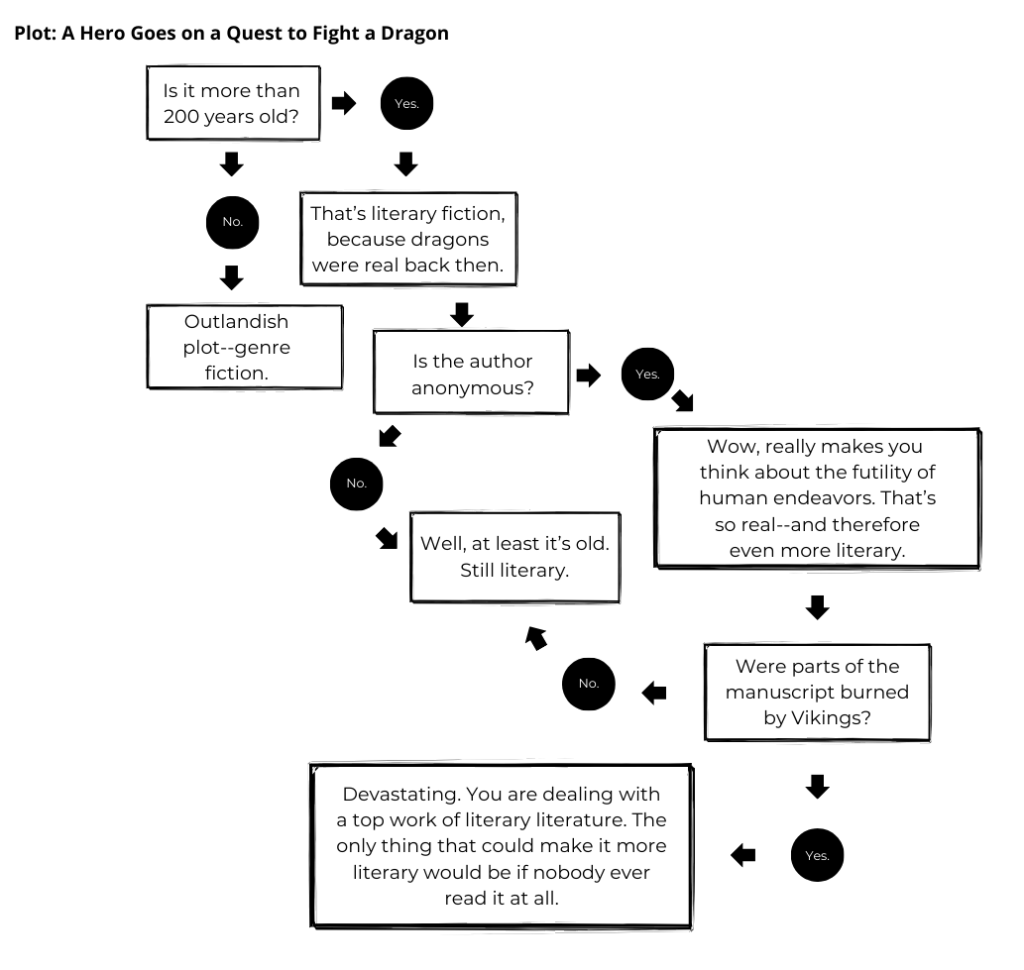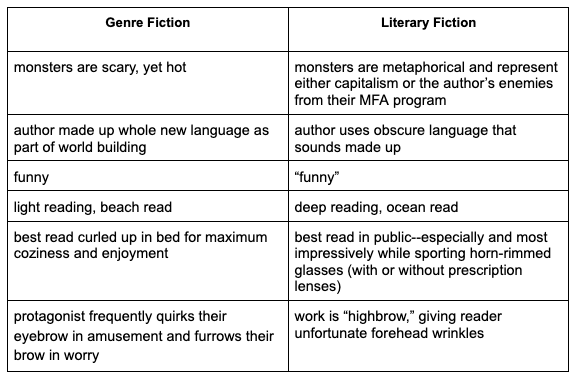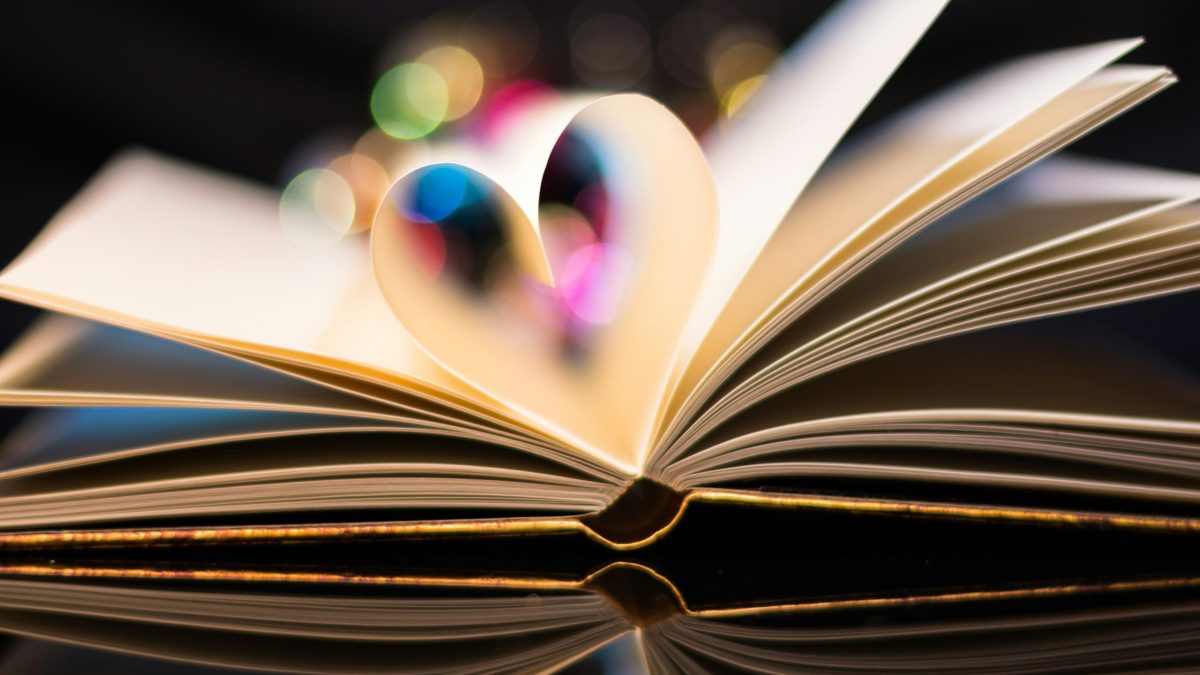1. Check the cover for clues.
Literary fiction will have the title in Helvetica along with amorphous shapes in shades of that year’s Pantone color.
Genre fiction will have a little cutout showing the face of either a wizard or a rakish duke. It opens to reveal the whole picture, and they’re standing in the snow.
2. Contemplate the book’s central questions.
Literary fiction asks:
- What more can be said about humanity and society, really?
- Should this novel perhaps have been a short story instead?
- Will my book club notice if I SparkNotes this one?
Genre fiction asks:
- How do so many vampires get onto public school grounds?
- Should they just replace all police detectives with plucky grandmothers?
- Why didn’t Regency-era inns ever have more than one available bed?
3. Ask, “How does this engage with our reality?”
Genre fiction, with its over-the-top characters and scenarios, offers an escape from real life. Literary fiction, with its unflinching honesty, confronts it.
However, certain variables may apply, as shown in the example below:

4. Analyze the main characters.
If the protagonist is a man with a job related to publishing, that’s literary fiction, and he will spend the novel lamenting the profound things he could write but doesn’t. If the main character is a woman with a job related to publishing, that’s genre fiction, and she will spend the novel buying shoes and never thinking about writing at all.
5. Interpret the symbolism.
With literary fiction, the reader can ascribe any meaning to the text because the author is either too dead or too busy working multiple adjunct jobs to argue. With genre fiction, the reader can ascribe any meaning to the text because the author already wrote eight more books this year and no longer remembers what The Rakish Martian Vampire Duke is about.
6. Consider other determining factors:

7. Try the process of elimination.
There are defined types of genre fiction: romance, mystery, fantasy, western, horror, science fiction, historical fiction, AP Historical Fiction, Calculus fiction, P.E. fiction, chick lit, kid lit, lamb lit, baby armadillo lit, cozy mystery, itchy-scratchy mystery, Jane Austen retellings, smutty Jane Austen retellings, novelty books about cats, novelty books about Jane Austen, novelty books about smutty cats, dystopian fiction, dystopian Jane Austen retellings, books where adolescents get sorted into categories, books where strangers are secretly angels / spies / Santas, and books that reveal the one true secret to getting rich (the latter may be labeled “nonfiction,” but come on).
Now, if your book doesn’t fit into any of these categories, chances are you’re holding a novel in which a man eats a fancy little cake and ponders his existence for five thousand pages. That’s literary fiction.
8. Reflect on the ending.
Genre fiction tends to neatly tie up every loose narrative thread; this is satisfying to audiences who read for entertainment. Contemporary romance in particular will end in an HEA, which stands for “Happily Ever After.” Literary fiction is more open-ended and ambiguous. Truly brilliant literary writers will shock the reader out of complacency by ending a work abruptly, even in the middle of a
Take a break from the news
We publish your favorite authors—even the ones you haven’t read yet. Get new fiction, essays, and poetry delivered to your inbox.
YOUR INBOX IS LIT
Enjoy strange, diverting work from The Commuter on Mondays, absorbing fiction from Recommended Reading on Wednesdays, and a roundup of our best work of the week on Fridays. Personalize your subscription preferences here.
